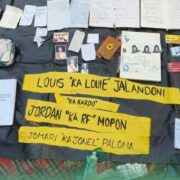Eating our way through Quezon’s grand coconut trail
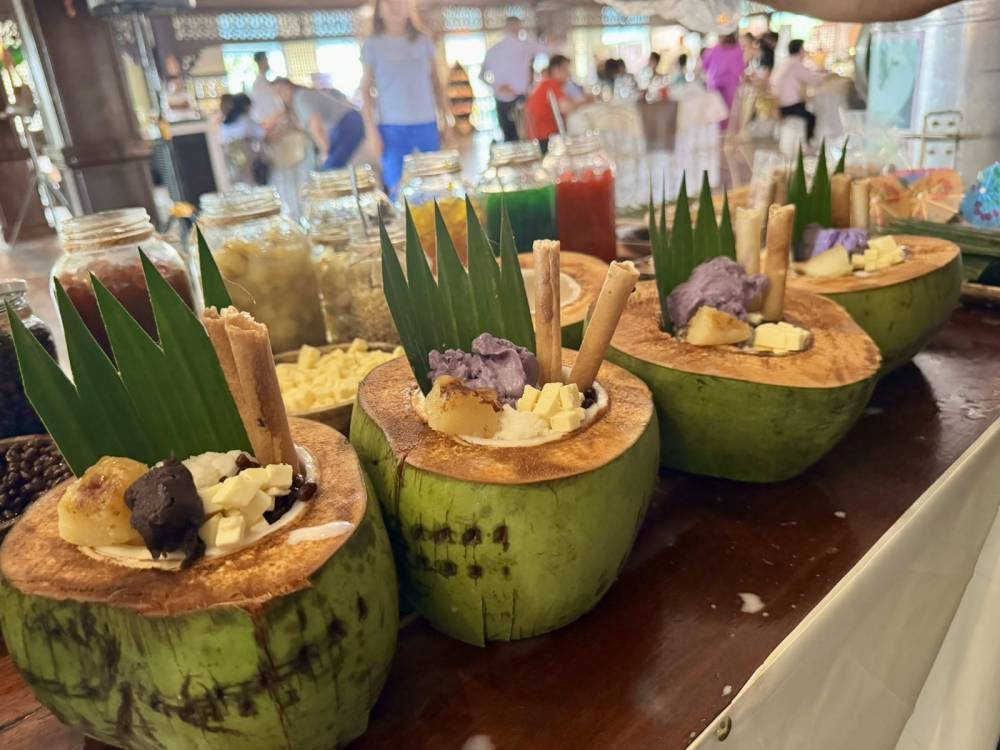
This year, I promised myself I would get to know my country better. As I see more of it, the more convinced I am that there is simply no place like home.
I was just in Quezon for my “Kitchens of the World (KOW): Grand Coconut Trail Culinary Tour.”
The province of Quezon is a top producer of coconut and known as the food basket of Calabarzon. It was a lovely drive to Sariaya, known for its many well-preserved heritage houses.
We started our adventure at the quaint baby blue 1927 Baysa-Villoso House, where we were greeted by a haranista singing Filipino classics.
An inviting spread of the family’s breakfast favorites awaited us.

Every town has its own longganisa. On the table was my favorite Sariaya sweet garlic longganisa. Beside it was the delicately smoked tinapang tamban.
Doña Aurora, our rendition of Scotch eggs and a favorite of the late first lady Aurora Quezon, was well represented.
Pinagong, the famed pugon-baked, dense turtle-shaped bread that tastes like monay, is a Sariaya delicacy—it was everyone’s favorite.
Many, for the first time, had a bite of the local tamales, a kakanin inspired by the Mexican tamale, brought here through the galleon trade.
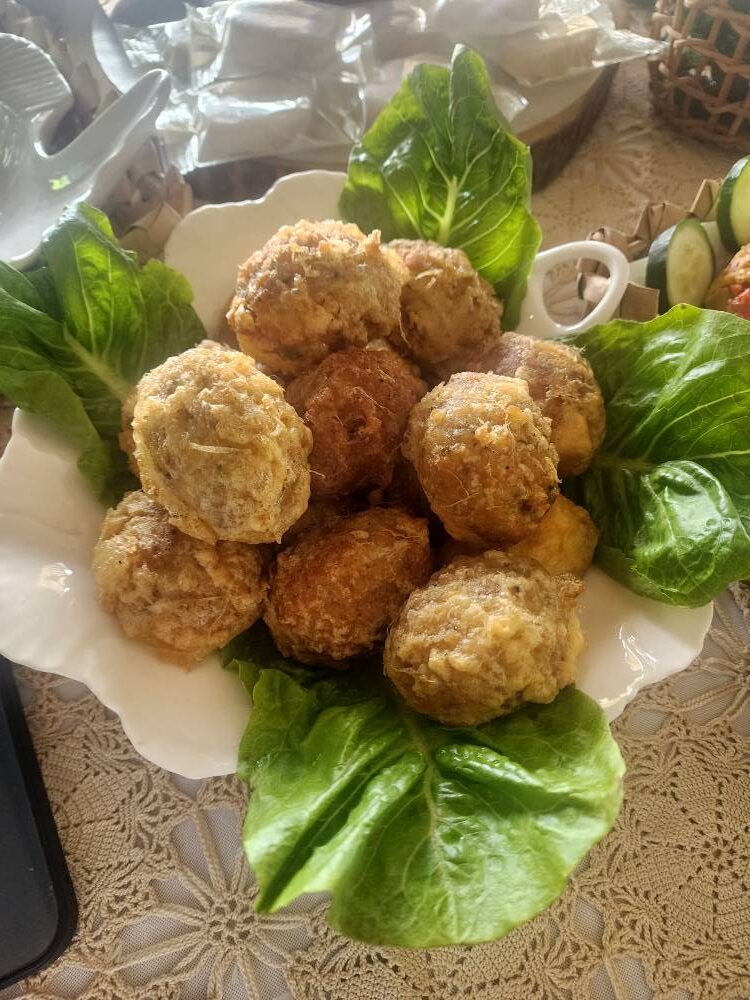
City of festivals
Full and content, we departed to visit the miraculous image of Santo Cristo de Burgos at the St. Francis of Assisi Parish Church, then headed to the handsome Gala-Rodriguez Heritage House, built during the Commonwealth by National Artist Juan Nakpil. The furnishings by Gonzalo Puyat still remain, and the house was the backdrop of the period telenovela “Pulang Araw.”
At the mansion, we were served bukid fare like syutsa, the Quezon version of batchoy with sotanghon or misua. Alongside it were suman sa ibos, parirutong (a violet rice cake) and sinaludsod (cassava pancake), all flavored with young shredded coconut.
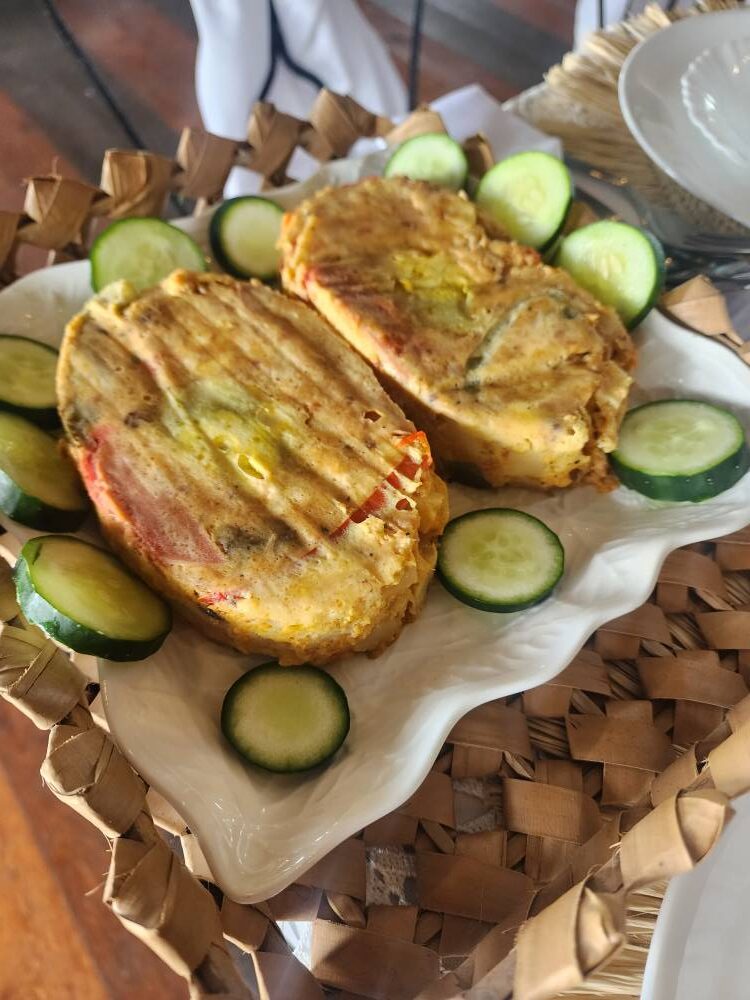
We burned the calories of our early morning indulgence by dancing the boogie to the beat of the roaring ’20s, before departing for Tayabas, the city of festivals.
When I travel, I want my group to witness the places we visit, at their finest, which is why for KOW Quezon, we recreated three festivals, two of which we staged in Tayabas.
As our buses stopped, the music played and the dancers in colorful costumes swayed to the tune of the Niyogyugan Festival.
From above the windows of Casa Comunidad (a national historical landmark), the traditional hagisan ng suman took place, headed by Tayabas Mayor Lovely Reynoso-Pontioso, who warmly welcomed us to the city.
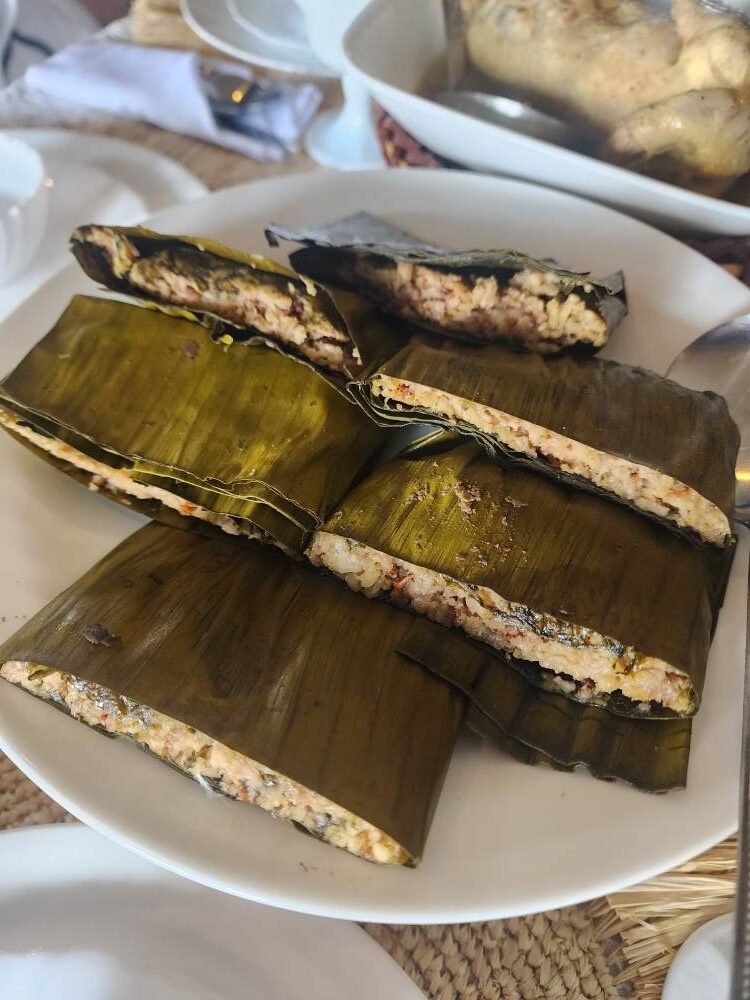
Native fare
During the fiesta celebration held every May 15, suman is thrown upon the passing of the icon of San Isidro Labrador, the patron saint of farmers. The gesture is done in the spirit of sharing, and in thanksgiving for a bountiful harvest. The whole experience was electrifying!
As the cheers wound down, we headed inside the festively decked Casa Comunidad for a traditional lunch that brought native Quezon fare to light. The food served primarily consisted of prewar agriculture based specialties.
The pamamanhikan dish, Delinong Manok, was ultra tasty. It’s a prewar dish made with a female chicken (dinalagang manok) that still has its egg inside of it. To make it, glutinous rice that was first sautéed with chicken innards is stuffed into the cavity.
The chicken is slow-cooked with water and aromatics until tender enough to slice. The fowl is eaten with rice and broth.
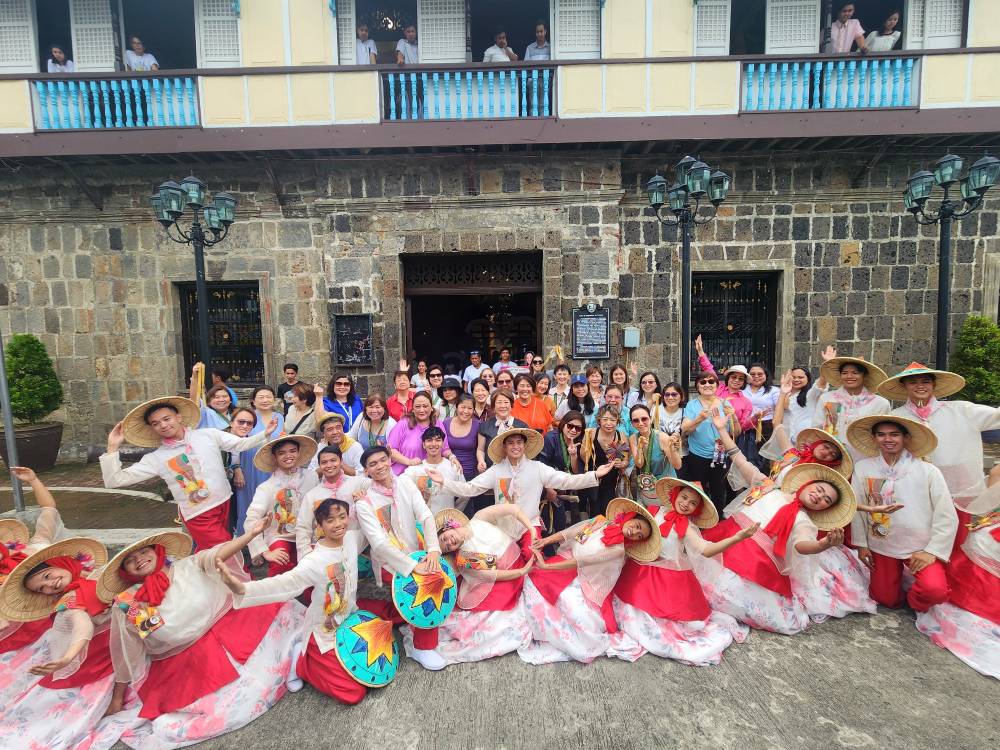
Legend has it that Delino was the name of the groom who brought the soup during his pamamanhikan.
The dinalagang manok signifies fertility, and the sticky rice, togetherness.
Laing can also be found in Quezon, and it differs from the Bicol type. It was gingery and less spicy. It is prepared by stuffing laing leaves with sardines and steeping it for hours in coconut cream.
On the spread was paksiw na pata with labong (bamboo shoots) that grows abundantly in Tayabas.
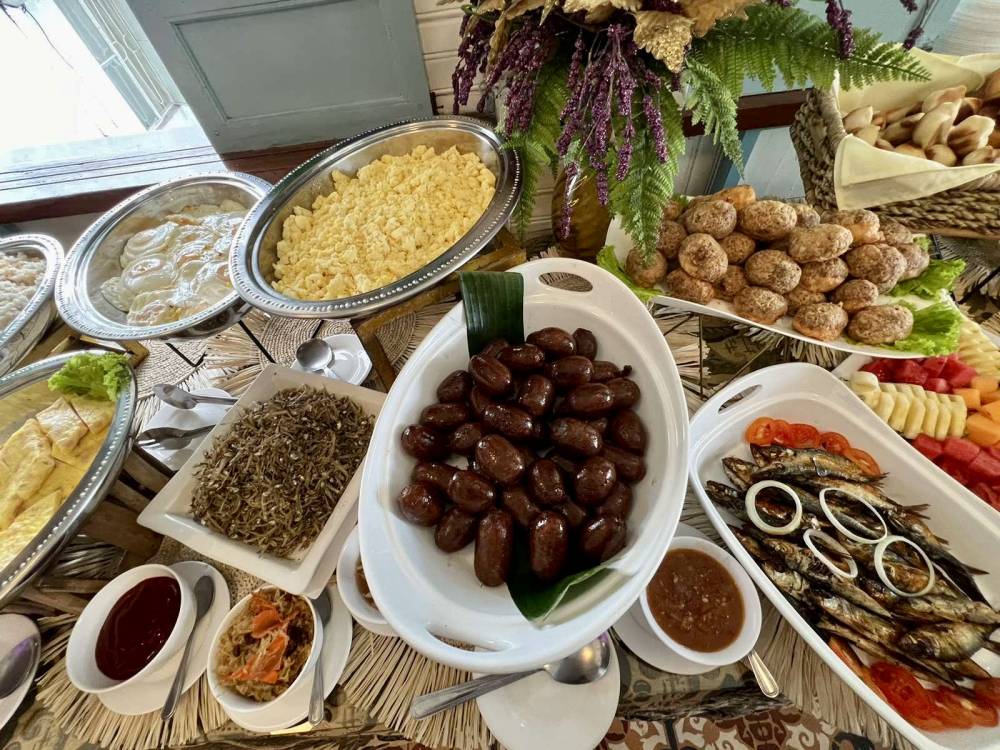
‘Tagayan’
Pinais na apta is my personal favorite traditional Quezon dish. It is made with river shrimps found in the natural springs of Tayabas. The coconut meat at its alangan stage is grated and mixed with the apta, and seasoned with salt and pepper. The mixture is wrapped in minty sweet kamamba leaves, then once again wrapped in banana leaves. The packets are cooked in coconut water until they dry out.
Sinaing na tambakol (yellow fin tuna) sa tuyong kalamias (dried kamias) is an example of a coastal dish. Quezon being a coastal province, and situated close to Batangas, it shares similar dishes with its neighbor.
The hardinera was born during the American era; it is Quezon’s meatloaf, a fiesta staple cooked in a llanera.
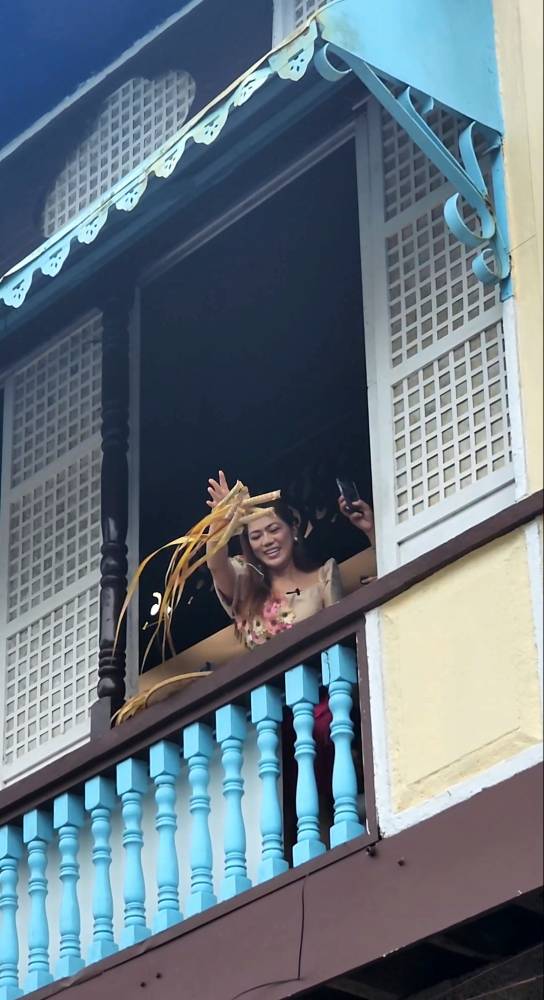
There were a lot of sweets to cap our meal: Rodillas yema cake, budin (a cassava cake made with Star Margarine) and the Quezon halo-halo sa buko.
The Minor Basilica of Saint Michael the Archangel, commonly known as the Tayabas Basilica, was a few steps away from Casa Comunidad. Built in the baroque style, it is a national historical treasure. The church is said to have one of the longest aisles in the country. It is there that we said our prayers, and asked the Lord to keep us safe, as we headed to picturesque Lucban, where we were to experience Pahiyas our way.
While in Lucban, we learned all about lambanog, the art of tagayan with tanggera and Quezon food expert Tina Decal, and where we partook of the most interesting and one-of-a-kind sinantolang lechon by artist and food aficionado Rosen Sambile.
All that and more next week.
www.reggieaspiras.com, @iamreggieaspiras on IG and FB











